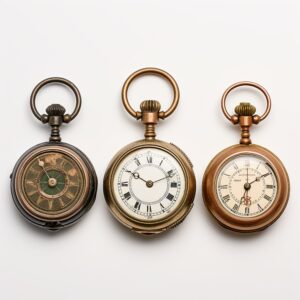Past, Present, Future: Layering in Narrative

I recently watched the Robert Zemeckis film Here. The film’s nonlinear structure tells the story of a single plot of land and the people who lived on it over a wide span of years. From time to time, the screen subdivides into multiple panes, so we see events from different time periods seeming to occur simultaneously. I found the film to be extremely moving. I’ve always been sensitive to the empty places we leave behind us as our lives unfold. Nothing has been sadder for me than leaving various homes. As thrilled as I’ve been to be moving on to another phase of my life, I’ve also found the sight of an empty apartment or house to be a sad reminder of time passing.
We get so caught up in the present course of our days that we often forget to pay attention to the fact that the clock is running, the calendar pages are turning over, the years are going by. Here forces me to think about how our present lives also contain our past ones as well as the ones we’ll live in the future.
A simple action such as taking a shower has so much significance if we allow it. I finished watching Here while I was walking on my treadmill. I came upstairs and got in the shower. The memories of other showers came to me—the portable one I installed in my parents’ home when they were near the end of their time together; the one I gave my father a few weeks before he died, and the first one I took after being released from the hospital a few years ago. I even considered how the moment contained the showers I’ve yet to take, possibly even the last one I’ll be able to have without assistance. The older I get, the more I realize we can never separate our pasts from our presents and our futures, all three of them occurring simultaneously.
Which brings me to what I want to say about writing. We need to think more about how our characters, whether in fiction or nonfiction, contain so much of what came before them and what will follow. We can find ways to demonstrate the past’s connection to the present, and we can indicate how that present also contains the future lives our characters will live. To help with that, here are two suggestions:
- We can invite a simple action or detail from the present to take our main characters’ hearts and minds into the past. We should embrace the well-selected detail from the past as a way to open the interior of a character, thereby illustrating a different aspect of the person and creating a round character rather than a flat one.
- We can let the events from the present reach a climax that allows our main characters to consider the days ahead of them. We shouldn’t be afraid to bring our characters to a place where they can imagine how their lives will be from thereon.
A narrative shouldn’t resolve itself so fully that we can’t see what came before the climax or what’s to come. The Zemeckis film reminded me of how a good story can end by allowing a reader to look back into the past and forward into the future. The texture of such layering can make a story more resonant.
Wonderful teacher you are
Thank you, Rhonda!
I loved the movie, HERE. Having finally moved Saturday, sleeping and eating (and showering!) in a new home, I’m feeling this piece! It’s spawning ideas…thank you.
Glad you got all moved in, Julie! I imagine you can certainly relate.